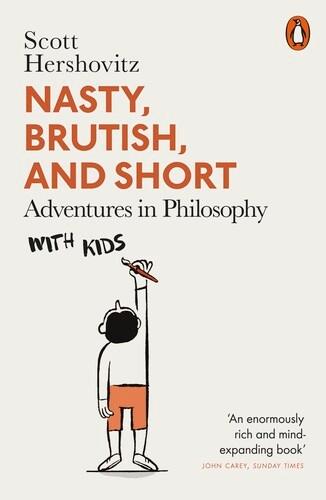책 이미지
![[eBook Code] The Boys and Girls Learn Differently Action Guide for Teachers](/img_thumb/9780787971922.jpg)
책 정보
· 분류 : 외국도서 > 교육/자료 > 교육 > 철학/사회 이슈
· ISBN : 9780787971922
· 쪽수 : 240쪽
목차
Acknowledgments xv
Introduction 1
Applying Brain-Based Research 1
Boys and Girls Learn Differently! 2
Using this Guide 2
The Contents of this Guide 3
1. Background: how the brain learns 7
Inherent Differences Between Boys’ and Girls’ Brains 8
Developmental and Structural Differences 9
Chemical and Hormonal Differences 10
Functional Differences 11
Differences in Processing Emotion 13
Why There are Differences Between Male and Female Brains 14
A Brief History of Brain Differences 14
Hormones in Utero and at Puberty 15
How Brain-Based Differences Affect Boys and Girls 16
Learning-Style Differences 16
Learning Differences and the Intelligences 21
Applying Brain-Based Gender Research 23
Academic Performance and Classroom Behavior 23
Reading and Writing Competence 24
Test Scores 24
Psychological, Learning, and Behavioral Disorders 25
Maturity, Discipline, and Behavior 26
Educational Aspirations 26
Athletics and Extracurricular Activities 27
Cultural Gender Bias 27
Sexual Abuse and Violence 28
2. Bonding and Attachment 29
Preschool and Kindergarten 29
Handling Children’s Emotional Stress 30
Bonding and Attachment Solutions 30
Elementary School 34
Bonding and Attachment Activities 34
Handling Students’ Emotional Stress 37
The Role of the Mentor 40
Middle School 42
The Early Adolescent’s Drop in Self-Esteem 42
Handling Students’ Emotional Stress 44
Community Collaboration 47
High School 50
Showing Interest in Students 50
Communication and Conflict Resolution 51
Peer Leadership, Not Peer Pressure 52
Mentoring 53
3. Discipline and Related Issues 55
Boys and Aggression Nurturance 55
Preschool and Kindergarten 56
Dealing with Aggressive Behavior 56
Elementary School 59
Learning from Past Mistakes 59
Discipline Techniques After an Offending Act 61
Techniques to Prevent Undisciplined Behavior 64
Conflict and Anger Management 66
Motivational Techniques 68
Character Education 68
Dealing with Cruelty, Hazing, and Violence 70
The Role of Media 73
Middle School 74
Strategies for Providing Discipline 74
Community Collaboration 77
Character Education 78
High School 79
Techniques to Prevent Undisciplined Behavior 79
Character Education and Service Projects 81
Helping Young Males to Manage Aggression 82
4. Math, Science, and Spatial Learning 83
Preschool and Kindergarten 83
Techniques to Encourage Learning 83
Self-Directed Activities 85
Integrated Use of the Physical Environment 85
Games to Encourage Logical-Mathematical Thinking 87
Elementary School 89
Techniques to Encourage Learning 89
Using Manipulatives Whenever Possible 90
Mixing Modalities and Strategies 92
Use of Computers and Other Media 93
Middle School 94
Techniques to Encourage Learning 95
Boys and Girls Need Some of the Same Things 96
Computer Science and Gender in Middle School and High School 96
High School 99
Techniques to Encourage Learning 100
5. Language, Reading, Writing, and Social Science 103
Preschool and Kindergarten 103
Using Movement, Manipulatives, and Props 103
Elementary School 105
Techniques to Encourage Learning 105
Using Manipulatives 108
Providing Various Learning Modalities 109
Middle School 110
Techniques to Encourage Learning 111
High School 115
Teaching Reading 115
Teaching Language 116
Teaching Social Science 118
6. Physical Learning and Nutrition 121
The Need for Physical Activity 121
Preschool and Kindergarten 122
Developing Fine Motor Skills 122
The Outdoor Classroom 122
Elementary School 124
Movement and Motor Skills 124
Sports and Athletics 125
The Outdoor Classroom 126
Middle School and High School 127
Sports and Athletics 127
Mixed-Gender Sports 128
The Outdoor Classroom 129
Nutrition and Learning 129
Obesity 129
Carbohydrates, Proteins, and the School Day 130
Fatty Acids 131
7. Special Education 133
A Program for Reading and Writing 133
Preschool and Kindergarten 134
Bonding and School-Home Alliances 134
Use of Psychotropic Medication 135
Elementary School 137
Techniques to Encourage Learning 137
Spatial Stimulants, Movement, and Multisensory Approaches 139
The Multisensory Approach to Reading Problems 141
Middle School 141
Factors in the Need for Special Education 141
Techniques to Encourage Learning 142
The Underachiever 144
High School 145
Techniques to Encourage Learning 145
8. Planning Your Own Experiential Activities 147
Introducing Experiential Learning 147
The Natural Learning Process 148
The Teacher as Facilitator 151
Experiential Learning Techniques 152
Important Factors in Planning Experiential Learning 155
Purpose(s) 155
Students 155
Timing 156
Involvement 156
Preferred Input Modes 156
Instructions 157
Modes of Expression 157
Psychological Safety 157
Equipment, Manipulatives, and Props 157
Planning Activities and Games to Enhance Learning 158
Developmental Themes for Creating Learning Techniques and Activities 159
9. Structural Innovations 165
Preschool and Kindergarten 165
Innovations to Encourage Learning 165
Parent-Involvement Programs 166
Elementary School 167
Use of School Time 167
Class Size and Number of Teachers 168
Use of Group Dynamics and Group Work 169
Standardized Testing 170
Middle School 171
Separate-Sex Education 171
Psychosocial Education 173
Rites of Passage 174
Uniforms and Dress Codes 175
Other Innovations to Encourage Learning 176
High School 178
Class Size 178
Team Teaching and Homerooms 178
Use of School Time 179
Uniforms and Dress Codes 180
Innovations Students Want 181
Full Psychosocial Education 184
Rites of Passage 188
Counterinnovations 189
Appendix: Working with Parents 191
Preschool and Kindergarten 191
Elementary School 192
Middle School 192
High School 193
References and Resources 195
Publications 195
Organizations, Programs, and Services 198
The Authors 201
The Gurian Institute 203
Index 205













![[eBook Code] The Boys and Girls Learn Differently Action Guide for Teachers](./img_thumb/9780787971922.jpg)












